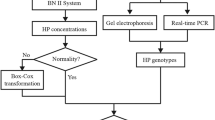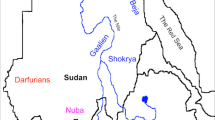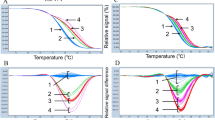Abstract
IN view of the widespread interest in the distribution of haptoglobin types among various ethnic groups, we wish to report preliminary results from work with Chinese residents in Taiwan. These results agree with those of Kirk et al.1, with the exception that no instances of the so-called 0–0 type were found among the 172 individuals tested (see Table 1). Nevertheless, we wish to comment on the striking similarity between the haptoglobin distribution in Chinese and those of the African Bushmen. The use of the distribution of haptoglobin types as an additional tool for genetic and anthropological studies has well-recognized possibilities2, and may eventually allow reconstruction of more distant racial interrelationships too subtle for recognition with the present fragmentary data. An example of such a relationship is that of the possible Mongoloid character of the Bushmen at present found in the southern portion of Africa, and exemplified by the Bushmen of the Kalahari Desert region in Bochuanaland and those in South-West Africa. As mentioned by Weiner and Zoutendyk3, the concept of a possible Mongoloid component in the Bushmen heritage is based primarily on the skin colour of the Bushmen and the frequent occurrence of an internal epicanthric fold. Although their general physiognomy is recognized to be distinct from other ethnic groups in Africa, the Bushmen generally are regarded by anthropologists to be related to the Negroid races. Recent support for this position is provided, for example, by the blood group studies on the Central Kalahari Bushmen made by Weiner and Zoutendyk3, who concluded that the Central Kalahari Bushmen, as well as the Bushmen from South-West Africa, “exhibit in general a Negroid pattern in their blood groups”.
This is a preview of subscription content, access via your institution
Access options
Subscribe to this journal
Receive 51 print issues and online access
$199.00 per year
only $3.90 per issue
Buy this article
- Purchase on Springer Link
- Instant access to full article PDF
Prices may be subject to local taxes which are calculated during checkout
Similar content being viewed by others
References
Kirk, R. L., Lai, L. Y. C., Mahmood, S., and Singh, R. B., Nature, 185, 185 (1960).
Budtz-Olsen, O. E., Med. J. Austral., 2, 689 (1958).
Weiner, J. S., and Zoutendyk, A., Nature, 183, 843 (1959).
Zoutendyk, A., Kopec, A. C., and Mourant, A. E., Amer. J. Phys. Anthrop., 11, 361 (1953).
Barnicot, N. A., Garlick, J. P., Singer, R., and Weiner, J. S., Nature, 184, 2042 (1959).
Author information
Authors and Affiliations
Rights and permissions
About this article
Cite this article
BLACKWELL, R., LIN, TY. & SHIAO, D. Distribution of Haptoglobins among Chinese in Taiwan. Nature 193, 284–285 (1962). https://doi.org/10.1038/193284a0
Issue Date:
DOI: https://doi.org/10.1038/193284a0
This article is cited by
-
Haptoglobin Distribution in a Filipino Population
Nature (1964)
-
Distribution of Haptoglobin among Thais
Nature (1963)
Comments
By submitting a comment you agree to abide by our Terms and Community Guidelines. If you find something abusive or that does not comply with our terms or guidelines please flag it as inappropriate.



